-
ROBE OF GEMS/MANTO DE GEMAS (Natalia López Gallardo 2021)
NATALIA LOPEZ GALLARDO: ROBE OF GEMS/MANTO DE GEMAS (2021)
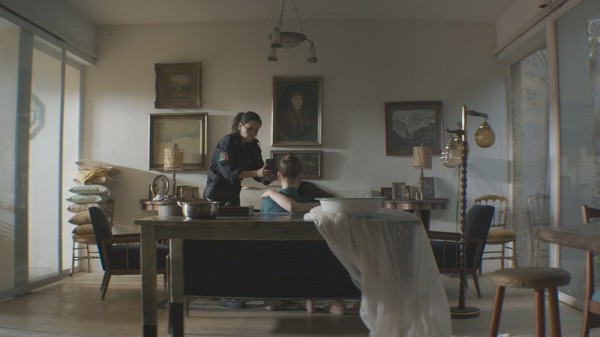
A SCENE FROM ROBE OF GEMS
TRAILER
A walk on the creepy side down Mexico way in a brilliant but disappointing debut feature that winds up being a downer
Married to Carlos Reygadas and his film editor, Lopez Gallalrdo has also done editing for Lisando Alonso (Jauja) and Amat Escalante (Heli). She shows their influence, steers her own path, but it's not clear where she's going. Aesthetics of mood trump dialog scenes or narrative line. Initially the film, her feature debut, is deeply intriguing with its special sense of complicated life observed without being understood. Eventually a certain outline emerges, involving a wealthy woman, Isobel (Nailea Norvind), known as "blondie" and her bereaved and corrupted longtine family servant María (Antonia Olivares), and a young criminal, Adán (Daniel García), whose band of narcos María is tied up with.
The persistent obscurity of the film frustrates all efforts to make sense of it as its nearly two-hour run-time wanders along. In the Guardian Peter Bradshaw, while initially enthusiastic - or at least impressed by the critical buzz at the festival debut, and assigning the film a rating of four out of five stars - wonders whether some of its "obscurity is not a first-time film-maker’s flaw." The Variety reviewer agrees ("The Banality of Evil Is a Little Too Banal in Elliptical Anti-Triller"), but notes the movie "still shines as a sensory experience, mind." She illustrates with: "The din of summer insects gives way to police department chatter in one scene and the not-quite bliss of Isabel’s home life in another." She also notes how Lopez Gallardo's observations can bring out the strangeness of the ordinary; and how even when one knows her influences, the film's moments of unexpected, silent violence are still shocking and troubling here.
So it is a very rich mix, augmented by a gorgeous, original visual style piloted by dp Adrián Durazo, with pale, subtly colored widescreen ugly-beautiful images. But this is also a film that excites, fascinates, and then gradually disappoints.
"It is a disturbing and unsettling piece of work," wrote Bradshaw, "a psycho-pathological moodboard of a film, in which guilt, horror and shame poison the atmosphere." He specifies that "exactly what is going on has to be inferred through the indirect hints and cloudy indications" and that these are "never finally and definitively revealed,"
Bradshaw has figured out(or found in the press kit) a detail many are baffled by, the title. He explains it "appears to refer to a Buddhist parable about the man who lives in poverty, not knowing that a wealthy friend has securely but invisibly sewn a precious gem into his robe so that he would not have to live like this." Bradshaw adds, "this allusion is one of the many opaque and difficult things about this film. "The problem, then," notes Variety, "is that too much of this is dispiriting without also being enlightening."
Robe of Gems/Manto de Gemas, 118 mins., debuted at the Berlinale Feb. 11, 2022 and opens theatrically in Argentina Jun. 2nd. Included in the Apr. 2022 New Directors/New Films series. The five-review Metascore is 69%.
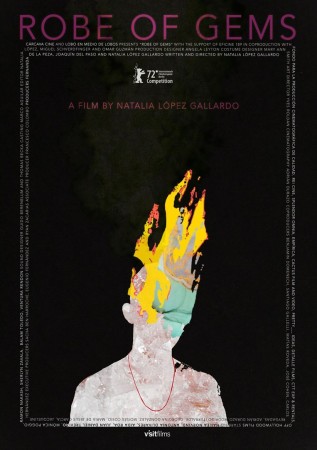
Last edited by Chris Knipp; 04-04-2023 at 09:33 PM.
-
SINGING IN THE WILDERNESS (Dongnan Chen 2021)
DONGHAN CHEN: SINGING IN THE WILDERNESS (2021)
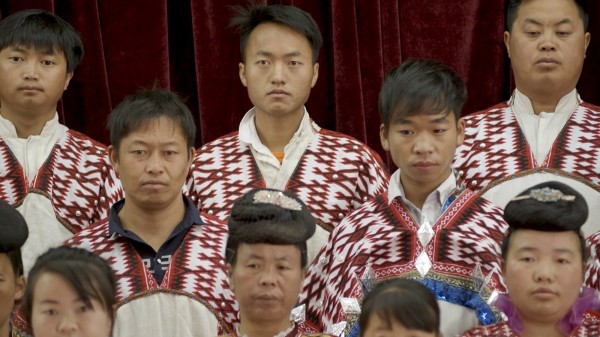
SHENG, TOP CENTER, IN SINGING IN THE WILDERNESS
A scrubbed-clean Chinese Christian farmer/choir turns out to have problems individually and as an exploited Miao minority
"The disorienting speed of “progress” in modern-day China is engagingly encapsulated in Dongnan Chen’s Singing in the Wilderness, whose starting-point is a Christian choir in the mountains of the southern Yunnan province. Switching nimbly between individuals, groups and their wider cultural and socio-economic contexts over several tumultuous years, Chen — herself Chinese, though New York-based — effectively conveys vivid implications without the need for direct editorializing." - Neil Young, Screen Daily.
Things get interesting when Chen follows several of the choir members.
"Chen pays particular attention to two choir-members: Ping, a spirited, ambitious woman in her early 20s (“I don’t want to be a farmer for a lifetime,”) and Sheng, a 30ish goatherd who concentrates on his religion, work and singing to the detriment of his personal life. Both Ping and Sheng eventually get married – Ping moves 50 miles away and must leave the choir – and both experience harrowing domestic woes as a result. Over several years we see them suffer the social, economic and cultural vicissitudes of the area, and its citizens receiving regional, national and ultimately international attention.
"The insensitive handling of people, traditions and landscape conveyed by Singing in the Wilderness is, of course, a microcosm of much wider developments across China. Zhang schemes with a developer to turn Little Creek into a tourist magnet, 'a very exotic town,' with predictably unfortunate consequences for all as residents are displaced and farming and traditional crafts are rapidly abandoned. Chen maximizes her access to several revealing discussions, all which paint officialdom in a dim light. Her eye-openingly candid film may attract a frosty reception from the Chinese authorities; audiences both at home and abroad, however, will find this a touching and rewarding example of deceptively low-key political documentary. - - Neil Young.
From "WarMachine" on Letterboxd (from the French):
"The genius of the film lies in the subtlety with which it formulates its critique of the capitalist and political opportunism and misanthropy that characterize contemporary China. Director Dongnan Chen focuses on a hyper-talented Christian choir of Miao farmers, a second-class mountain people who reside in the inhospitable peaks of Yunnan. They are beautiful and touching, the choristers, and one would like the 'success story' we see on screen to be truly beneficial to them. The truth is that they are actually being fleeced by everyone else...
"The Miao are already one of the poorest peoples in China, and if they do something extraordinary, a choir for example, they are bled even more. Their act is commercialized, they're brought on The Voice, they're sold merchandise in their likeness, they even buy up parts of their land to build properties, which some broke investor will eventually leave in the ground. It's fuckin' disgusting, but at the same time it's so symptomatic of our times..."
Singing in the Wilderness, 94 mins., debuted at Thessaloniki, Jun. 2021, included in several other festivals including Montreal and DMZ, and part of the Apr. 2022 FLC-MoMA New Directors/New Films series.
Last edited by Chris Knipp; 04-20-2022 at 10:47 PM.
-
THE CATHEDRAL (Ricky D'Ambrose 2021)
RICKY D'AMBROSE: THE CATHEDRAL (2021)
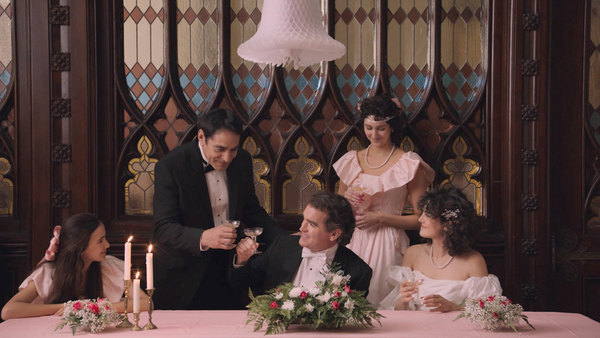
TRAILER
The author runs through his life age one to nineteen as a series of tableaux
"What makes the fabric of our upbringing? The memories we’ll reflect on after those years have passed are often not what we may hold onto in a moment filtered and refracted through a thousand more experiences. Following his hour-long debut feature Notes on an Appearance, Ricky D’Ambrose’s Bressonian style continues with The Cathedral, a less intellectually rigorous outing that still impresses with its sense of personal significance, recreating slivers of a life experience over some two decades to form a vivid recollection of both the fracturing of a family and the United States at large. It’s an ambitious undertaking for an 87-minute film, and while this lofty aim can result in a few passages striking a bit broad, one comes away admiring D’Ambrose’s meticulously committed approach to storytelling." Jordan Raup, The Film Stage
"If we can even trust our own memories (and science says we can’t), it’s far more likely that what we retain from our childhoods is random and unremarkable, an episode of an old TV show we once watched rather than a trip to Disney World. Much like we remember slights more than compliments, so too do negative events remain fresh in our minds far more than the good times. Ricky D’Ambrose’s The Cathedral is essentially a brain dump of these bits and pieces of his life, committed to film. It’s not a 'slice of life' movie, exactly, more like a collage that would benefit from some filling in of a few blank spaces." - Raup.
"As someone who grew up in the 80s, I appreciate the touches of realism, like Richard’s bland, pastel living room, which looks like it came directly out of a Polaroid circa 1988. I appreciate D'Ambrose’s fascination with the ordinary, like when he holds a shot on a pair of shoes, or a relative's bejeweled hands. The Cathedral is an interesting concept, and a fresh departure from the usual Wonder Years narrative. But its insistence on depicting moments without emotion feels, in the end, a little empty." - Gena Radcliffe, The Spool.
The Cathedral, 87 m,ins., debuted Venice, showed at Sundance, Rotterdam, several others and included in Apr. 2022's New Directors/New Films.
Last edited by Chris Knipp; 04-20-2022 at 10:50 PM.
-
THE CITY AND THE CITY ( Christos Passalis, Syllas Tzoumerkas 2021)
CHRISTOS PASSALIS, SYLLAS TZOUMERKAS: THE CITY AND THE CITY (2021)
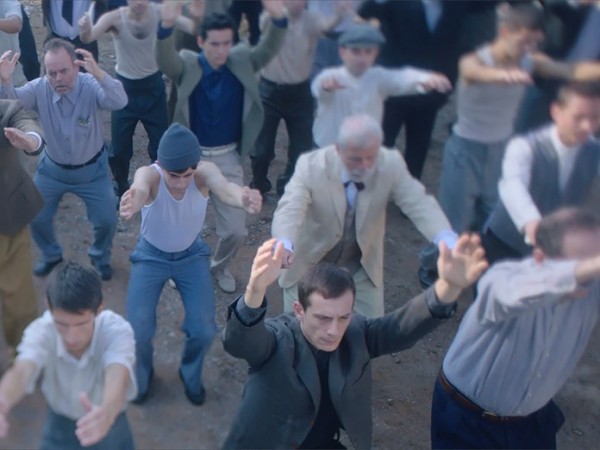
Installation piece on antisemitism in the Greek city of Thessaloniki fails as a stand-alone film
Greek duo Christos Passalis and Syllas Tzoumerkas deliver a kaleidoscopic chronicle of mid-20th-century anti-semitism in their native Thessaloniki via their first writing-directing collaboration The City and the City (I Poli ke i Poli). A deliberately disorienting affair which shifts freely between fiction and documentary elements, colour and monochrome images, live action and stills across multiple time-lines and several languages (some sentences start in one tongue, finish in another), it’s an absorbing and appropriately disturbing indictment of man’s inhumanity to man. - Neil Young, Screen Daily
Seeking to achieve a "kaleidoscopic chronicle," this documentary depicts pro-Nazi anti-Semitism in the filmmakers' hometown of Thessaloniki, scene of a film festival and a Greek port city on the Thermaic Gulf of the Aegean Sea. Maybe I'm wrong, but it seemed to me that Presenting acts of anti-Semitic cruelty from the Nazi era in an "artistic," "experimental:" manner (shifts of language, B&W to color, reenactments to stock footage and stills) without any development of the abused people as real individuals seemed to me to partake of the worst qualities of the wrongdoers. It may help to understand that this is a film "originating as an installation project." It might work on a loop in a gallery with related supporting information: it does not stand alone very well as a film.
The City and the City/Poli i poli, 87 mins., debuted at the Berlinale Feb. 2022, showed at Thessaloniki Mar. 2022, and is included in New Directors/New Films Apr. 2022.
Last edited by Chris Knipp; 04-20-2022 at 11:07 PM.
-
WHITE BUILDING (Kavich Neang 2021)
KAVICH NEANG: WHITE BUILDING (2021)
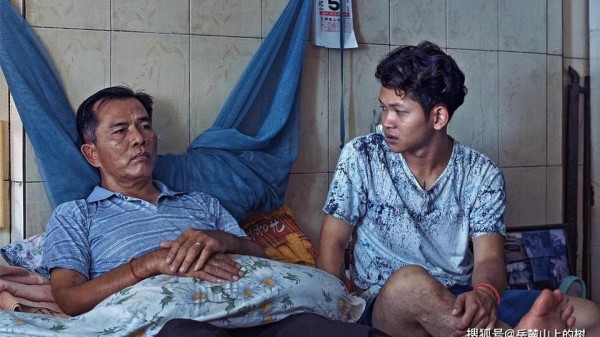
SITHAN HOOUT AND PISETH CCHUN IN WHITE BUILDING
TRAILER
Phnom Penh’s Rapid Urban Transformation seen autobiographically though the eyes of one family in 35-year-old Kavich Neang's assured debut feature
A young man's dreams of dance-star fame start to fade as the massive, decrepit building he calls home comes under threat from developers in this year's Cambodian Oscar entry.
A dampness-stained low-rise apartment building in Phnom Penh has been bought and is doomed. It's a place where director Kavich Neang himself lived growing up. It housed artists, teachers, and government employees near the center of town. That couldn't last in the face of the country's rapid recent transformation. In this film, Kavich Neang depicts his displacement from the actual historic building (constructed in 1963) where he had lived most of his life.
Stephanie Bunbury describes the eponymous building in her Deadline review as "stained with tropical rain, its cement falling off in chunks, its cat’s cradles of improvised electrical wiring truly shocking, in every sense of the word." Director Kavich Neang grew up here, and memorialized it in short films. Here he builds a feature around it, and a young man, and his retired sculptor-teacher father. This is a beautiful film, notable for its slow, philosophical quality and its noble silences.
Our main guide to this world is young Nang (Piseth Cchun, who won the Best Actor award in the Horizons section of the Venice Film Festival for his recessive, hypnotically calm performance) who is the moving force in a three-man dance crew, his eyes fixed on the prize of Cambodia’s Next Superstar, its X Factor, with them performing their hip hop- inspired routines wherever they can, on the street or in restaurants or clubs, to practice and build up confidence. "Riding three-up on his scooter through the night markets," Bunbury writes, "Nang and his pals are as recognizably part of the streetscape as the building itself." Those nighttime scooter shots are a reminder of, and quite likely a homage to, Tsai Ming-liang's classic 1992 Taiwanese coming-of-age film debut, Rebels of a Neon God starring his handsome future alter ego Lee Kahg-sheng.
The first half of the film features Nang, the dancing, and the scooter ride flirting with three pretty young girls on another scooter. But Nang's pals drift away, and his own ambition dissipates without a team, while the focus shifts to his father (Sithan Hout), who is the de facto leader of the White Building tenants who conducts discussions of what they are to do to counter a miserable offer of $1400 per square meter, which for those with small apartments won't provide them the money to move.
The discussions stagnate, while Nang's pop, who has diabetes, fails to deal in a timely fashion with another kind of rot, a big toe that has died and turned black. He rejects as a mere scam a doctor's suggestion that he must have the toe amputated by a surgeon friend with a clinic and goes on treating the gangrenous toe with folk remedies. The outcome is that the family winds up out in the country, but with the younger generation, first Nang's sister and then Nang, gradually back to Phnom Penh and the father having undergone the surgery that was threatened earlier.
But while these actions take place, more memorable are the visual elements that precede them, the pauses, the silences, the long shots of Piseth Cchun's handsome, changeable young Cambodian face, sometimes vibrant, sometimes childlike and vulnerable, sometimes sad. There is an arresting moment when Nang's father, all dressed up in a double-vested suit, stands quite still, ringed with light, smack in the middle a White Building hallway, staring at the camera. Sometimes the light and the color in cinematographer Douglas Seok's filming of interiors in the building, with their tropical glow, make them deceptively spacious, open, inviting, peaceful. It all vanished in 2017 and I'm not sure exactly how all the scenes were filmed, perhaps several years before the film's release. Slow cinema takes time.
But this is a kind of slow cinema with vibrant youthful dance and street scenes. This is more like gradually-slowing-down cinema. It moves toward acceptance and peace and a sense of the inevitable, though Nang's mother (Ok Sokha) is always left protesting the changes that dissolve the family and erode security. Ludovic Béot of Les Inrockuptibles wrote "The strength of the film is to restore this soon-to-be-wiped-out building as an intimate but also universal experience, both a reminiscent image that haunts the memory of its author and a powerful metaphor for all the aesthetic and cultural dispossessions generated by today's neoliberal actors."
White Building has the sponsorship of Jia Zhangke - himself a longtime observer of impoverished youth swept away by the forces of ruthless urban development. In addition there was French participation in the production of this assured, handsome film. It's produced by Les Films Du Losange, which was originally started by Barbet Schroeder and Éric Rohmer. It entered French cinemas Dec. 22, 2021.
White Building/Bodeng sar 90 mins., debuted as mentioned at Venice, showing at other international including London, Busan, Chicago, Hong Kong, Taipei and Singapore. It was Cambodia's 2022 best foreign Oscar entry.
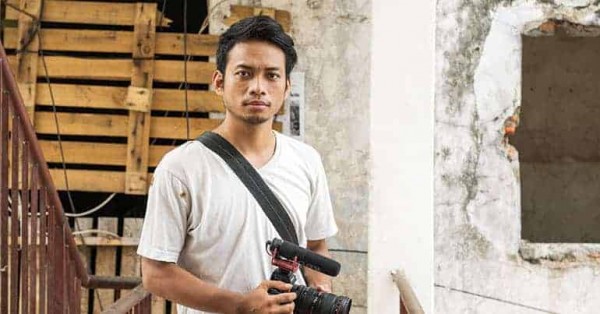
KAVICH NEANG
Last edited by Chris Knipp; 04-18-2022 at 02:09 AM.
-
THE AFRICAN DESPERATE (Martine Syms 2021) CLOSING NIGHT
MARTINE SYMS: THE AFRICAN DESPERATE (2021)
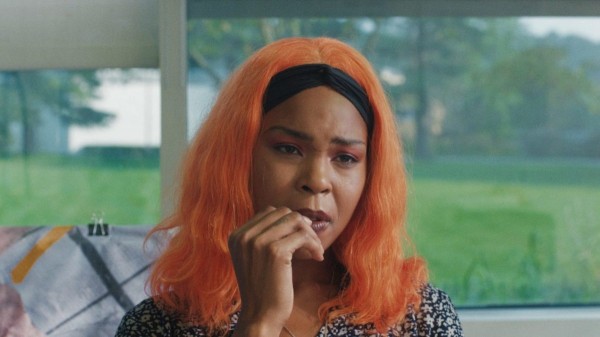
DIAMOND STINGILY IN THE AFRICAN DESPERATE
ND/NF CLOSING NIGHT FILM
TRAILER
Display of art-school cool and send-up of MFA completion
"There’s a certain kind of New York culture vulture," wrote Roisin Tapponi in Vogue, "who can distinguish a Rick Owens shopping bag from a standard brown tote. If you can spot the difference (and you carry the former), you might just occupy the same world as artist Martine Syms—or at least the one she’s lovingly portraying in her debut feature film, The African Desperate (2022). In this film, Syms captures all the subtle signifiers of upper-middle-class-liberal art culture, from Asai tops to Rimowa suitcases. If you know, you know—and you’re invited to the party."
In her central role as Syms' stand-in Palace, Diamond Stingily, with her screaming orange hair and low voice, is all attitude and confidence and has nothing to say during the highly satirical (I hope) MFA final oral that opens the film. But she doesn't have to. When they ask her what her plans for future work are she just says, "I don't know," and when she says it, it sounds like a wise remark. Palace says she's going to Chicago on the train the next morning, needs to tend to her sick parent, and that seems wise too, with everybody egging her on to come to the farewell party at this upstate New York art school venue that could be a stand-in for Bard.
But when she keeps being reminded she's supposed to DJ, and also that she's got work showing in the Venice Biennale, it becomes inevitable she''ll stop being coy and do some heavy partying. The bulk of the film is a psychedelic ramble through drugs and alcohol, and Palace's recovery from same. She loses her cookies more than once, and with all the drugs it's a good thing she does, but she never breaks attitude.
And that's about all there is to this film. But probably/maybe, if you know what you know as described in that Vogue excerpt cited earlier, that is enough as a calling card from this very hip "Hazy, alluring send-up of the art world" and of the MFA world and what it's like at art grad school nowadays, through a jaundiced eye.
The African Desperate, 97 mins., debuted at Apr. 2022 New Directors/New Films as the Closing Night film.
Saturday, April 30
6:00pm, FLC Walter Reade Theater (Q&A with Martine Syms)
9:00pm, FLC Walter Reade Theater (Q&A with Martine Syms)
Sunday, May 1
2:45pm, MoMA T2 (Q&A with Martine Syms
Last edited by Chris Knipp; 08-31-2022 at 01:51 PM.
-
BLUE ISLAND/ 憂鬱之島 ( Chan Tse-woon 2022)
CHAN TSE-WOON: BLUE ISLAND 憂鬱之島 (2022)
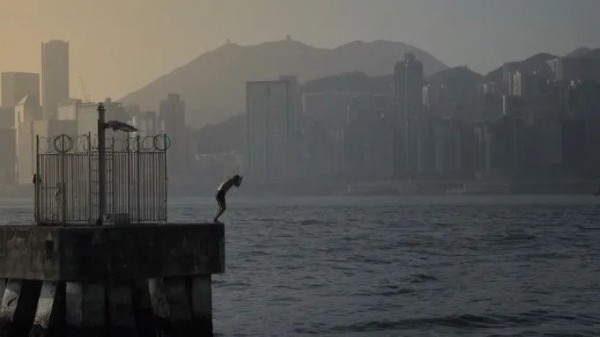
Beautiful, subtly moving film about what it means to be a Hongkonger
This film is an elegant and gentle over-and-overing of themes of protest and repression surrounding Hong Kong and China. 1967, 1989, and protests of 2019 and 2020 are referred to. Protesters and pro-democracy leaders are heard from and seen. We go back at first to how people swam to Hong Kong to escape from the repression of the Cultural Revolution in China.
It is moving to see numerous men (no women) who were leaders in recent protests against the mainland repression of Hong Kong who are now in custody and have been held in prison for a year or more. The film is sophisticated, self-reflective in format, showing itself being made. A motif is to show actors, sometimes playing themselves, having their hair trimmed, blow-dried, and arranged to prepare for filming, and as they are seen, they are identified in their roles as protestors.
In this way the film is both detached and emotionally potent. The Variety review by Richard Kuipers calls this an "inventive blend of documentary and drama." Through this blend, the film works a Brechtian Verfremdungseffekt, making viewers more involved by distancing them, starting an imaginative involvement it then short-circuits. Outsiders can be moved and illuminated, but one might say the target viewer is one who knows already. There is no conventional exegesis or declarative narrative of the 2019-2020 Hong Kong Protest Movement, but that is the subject.
This approach may not be understood by American viewers, as evidenced by Simon Abrams of RogerEbert.com complaining of "a thinly drawn narrative of historic events" and Ben Kenigsberg in on of the New York Times' lately increasingly superficial short reviews saying the film's "past-present parallelism" is "provocative" but also "seems faintly superficial" and (merely?) "a way of eliding distinctions and streamlining history." It would not be these things if you come to the film with the right knowledge and prior understanding. It would seem it is these reviews that are "thinly drawn" and "faintly superficial."
The film importantly is multigenerational in reference, bringing in older protesters early on and showing their direct link to their children or grandchildren who were arrested two years ago in Hong Kong. Young protestors are used to reenact the brave acts of their elders. We meet Chan Hak-chi, an elderly but still vigorous man who swam from China to Hong Kong with his wife Git Hing in 1973 to escape the Cultural Revolution. To play the couple in flashbacks young protestors Anson Sham Kwan-yin and Tin Siu-ying are called into service. Involvement in the past and detachment from it arrive together in a reenactment scene of rural outdoor community "education" come together in scenes such as a rural community education session in 1973 with a party official furiously extolling the virtues of “"great leader" Mao Zedong.
Chan then appears in the reenactment crowd and Sham asks him if it was like this, and he says no, in 1973 the meetings weren't so fervent. There are several other important mixed references of reenactment and documentary. Kenneth Lam, a pre-Tienanmen Square protestor who fled to Hong Kong after the June 4, 1989 massacre is played by2019 Hong Kong student leader Keith Fong Chung-yin. Recreations are mixed with footage of Lam attending the now-banned annual Tienanmen remembrance vigil. Chan is seen asking Fong to project his 2019 experience on his performance as Lam in 1989. Another important cross-pollination is having Kelvin Tam Kwan-long, an activist born after the 1997 handover, play Raymond Young, a loyal pro-People's Republic Hong Kong teenager who was jailed for participating in 1967 anti-British riiots.
It's powerful and disquieting to see Young today talk to Kelvin sitting on the floor of a prison cell about fear, doing time, and maintaining one's ideals. Young says prison time is hard to do but being out is harder: the ideals will erode over time. "We, the people of Hong Kong, in our 150 year history," asks Young, "have we ever been able to control our own fate?" After this, there are glimpses of a trial of the 2014 peaceful Umbrella Movement participants and the eloquent speech of one of them; a sentencing, left open-ended; and a series of portraits of recent accused "rioters" and their identities and statuses. Through the film is threaded moments of the man who swam from mainland China many years before. Whitehaired now, he still appears to swim in the ocean every day. He is one fit old dude - symbolic of human and Hongkonger survival, continuity.
A wise and passionate film about freedom and place that is also a work of art.
Blue Island 憂鬱之島 ("Island of Melancholy") 97 mins., debuted at Rotterdam online Jan. 26, 2022, showed in New Directors, New Films (FLC, NYC) Apr. 30, and won the top prize at Hot Docs (Toronto) May 6; also CAAMfest and Taiwan. It released in Japan Jul. 16 (it is Japanese-produced). Now playing at Metrograph from Jul. 29, 2022 and streaming from Aug. 5. showing at the Roxie Theater in San Francisco from Sat., Aug. 6.
 Posting Permissions
Posting Permissions
- You may not post new threads
- You may not post replies
- You may not post attachments
- You may not edit your posts
-
Forum Rules






 Reply With Quote
Reply With Quote







Bookmarks